Roadbuilding: Equipment and technology review
01 June 2021
Making European road projects more sustainable, productive, efficient and cost effective
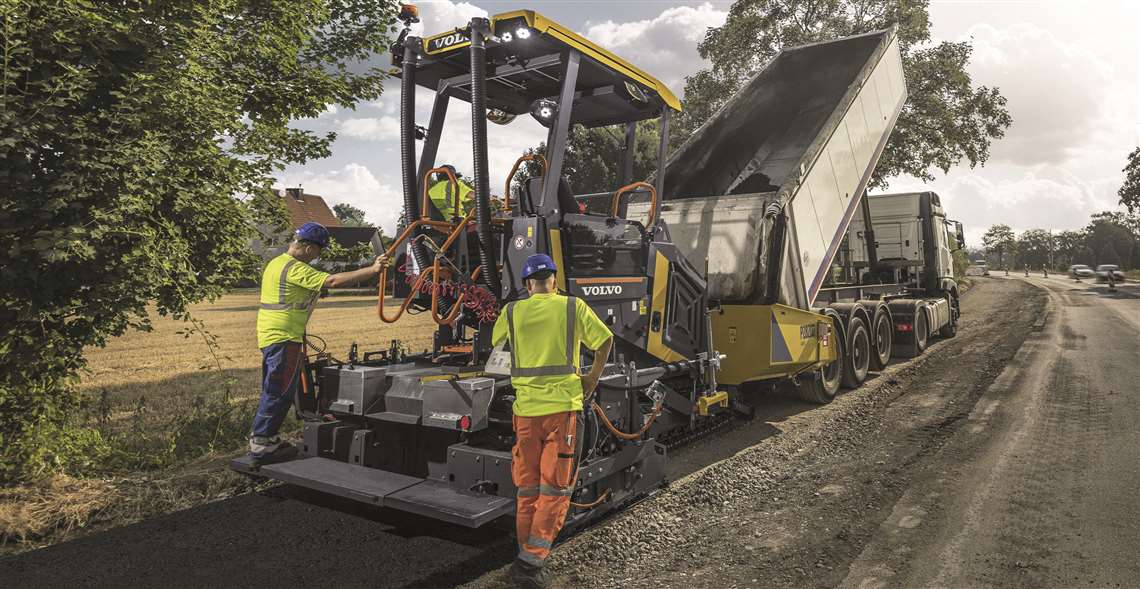 Volvo’s P2820D tracked paver is the most compact in Volvo CE’s range; a versatile machine for small- to medium-sized applications
Volvo’s P2820D tracked paver is the most compact in Volvo CE’s range; a versatile machine for small- to medium-sized applications
Road construction projects throughout Europe are many and varied, as is the equipment necessary to carry them out.
While the Covid-19 pandemic brought much of the world to a halt, it did, in some ways, allow for safer and quicker progress on some of these projects.
However, new normal is bringing with it new challenges: one is the increasing demand for more efficient (and less expensive) projects; another is the desire for sustainable solutions.
Paving in the ‘new normal’
Paul Johnson, Volvo CE’s head of product management for roads, told CE, “Like any industry, road construction has been affected in ways we never anticipated during the Covid-19 pandemic, but it has also proved incredibly resilient. In many European countries, infrastructure has been identified as one of the key industries that must remain open.
“Short-term this has meant the priority has certainly been on safer ways of working for contractors and their teams to complete existing projects and keep infrastructure maintained so that transport networks and supplies are able to keep running smoothly. On the one hand, this has meant we have
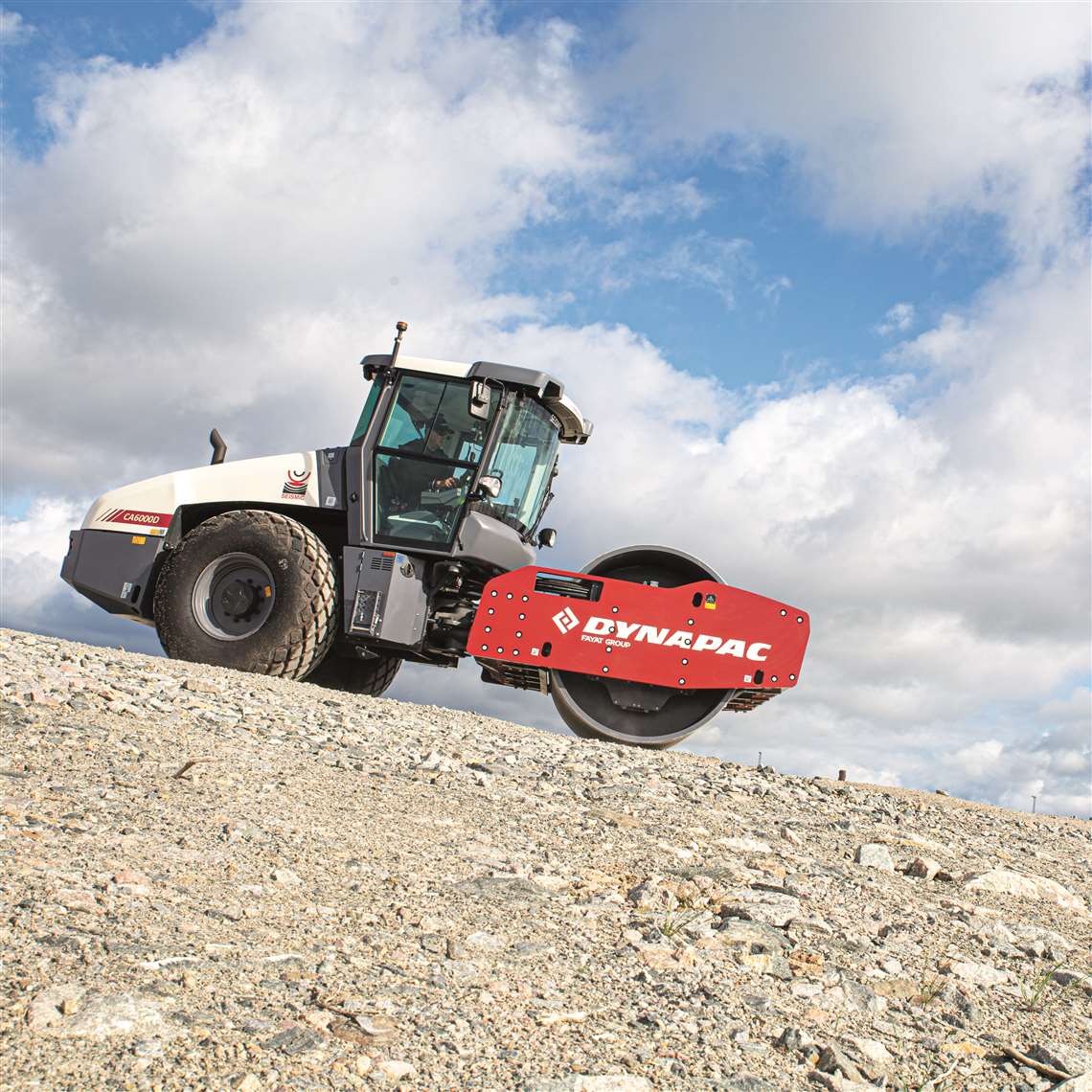 Dynapac’s Seismic technology promises significant reductions in compaction frequency and therefore fuel requirements
Dynapac’s Seismic technology promises significant reductions in compaction frequency and therefore fuel requirements
less traffic on the roads, presenting fewer risks and even faster project completion. But on the other hand, working practices have had to change to be Covid safe, not only on the jobsite but in the supply and maintenance of the equipment being used out on the jobsite, which has caused some delays.”
“In the medium term, we are positive about the outlook, thanks in part to the number of projects that have been agreed and funded well in advance. Covid-19 has meant many contractors are taking a closer look at the technology available to them to allow workers to stay away from the jobsite wherever possible and let the machines and software do the work.”
One of the ways Volvo is enabling this type of work is through its Pave Assist system, powered by the Co-Pilot on-board computer and display, designed for use across a wide range of Volvo equipment.
Within the system, Material Manager offers calculations such as distance and tonnage paved, paved area and CO2 emissions.
By recording the volume of delivered asphalt and the amount of road paved, clients can identify the machine’s throughput efficiency and build a record for future projects.
Another useful element of the system, Thermal Profiling, monitors the paved asphalt and detects temperature variations, helping to ensure laid material is consistent throughout.
A Seismic shift in compaction
Before paving can begin on a road project, of course, soil compaction must take place, and Dynapac recently introduced a new way of undertaking this process.
With its Seismic technology, the company says it has moved away from the forced amplitude method and adopted a method more in tune with nature.
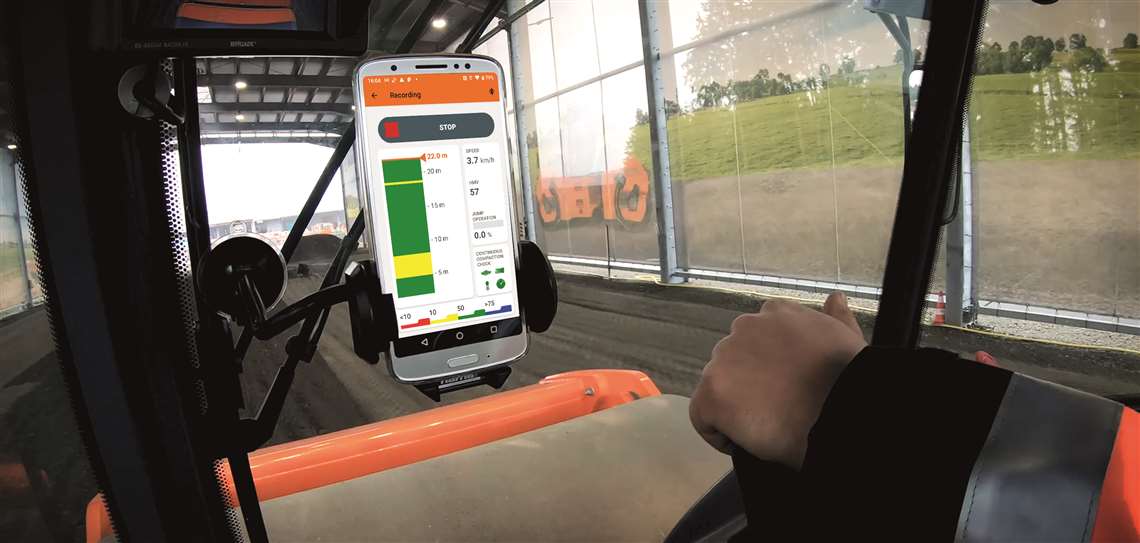 The Smart Doc app from Hamm gives less experienced operators a range of information on compaction parameters and levels
The Smart Doc app from Hamm gives less experienced operators a range of information on compaction parameters and levels
The company says, when you compact soils, you want to introduce as much energy as possible into the material, without crushing or over compacting it. With energy efficiency and fuel consumption now a key factor in purchasing equipment, it’s important to carry out the compaction process in the most environmentally friendly and cost-effective way.
Dynapac has undertaken significant research in developing Seismic compaction, but, in basic terms, the energy from the machine is transferred to the soil at exactly the right time, maximising compaction, while minimising the energy or fuel needed to achieve this.
In other words, using a continual flow of data from the ground, a Seismic machine can continually (or rather every 0.2 seconds) match drum frequency to the material’s resonant frequency as it passes over it, achieving optimised compaction.
Dynapac says its tests have shown that the Seismic system has the capacity to reduce the required vibration power for compaction by between 20 and 30%. This, the company says, translates to a 10% lifetime saving in fuel burn, with the potential to increase that to 25% when using the Eco-mode factory-fitted on all Seismic machines.
Smart compaction
Another compaction expert, Hamm, has attempted to address the well reported (and growing) skills shortage challenge with the development of SmartDoc, a mobile app designed for on-the-job self monitoring.
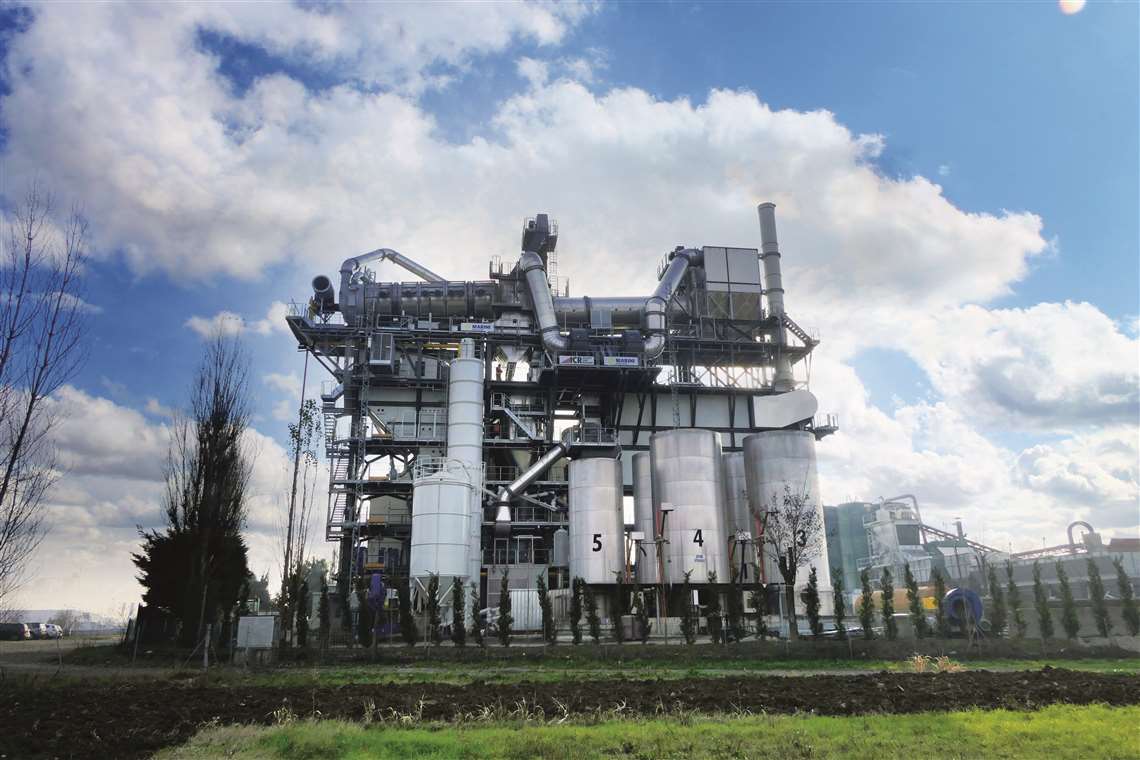 The Marini Master Tower re-burns gases to produce energy savings and can use up to 100% recycled material
The Marini Master Tower re-burns gases to produce energy savings and can use up to 100% recycled material
Hamm believes the technology will be attractive to newer operators, who may not have the skills of their more experienced colleagues, for two reasons: Firstly, the smartphone app gives a real-time display of compaction levels, during transit, giving operators the ability to achieve the same high-quality, homogeneous compaction as more experienced staff; and secondly, as Hamm’s product manager for digital solutions, Dr Axel Mühlhausen explains, operators “become experience in a fun way”.
To use the app, machines must be equipped with Hamm’s Compaction Meter. When initiated, Smart Doc connects the mobile phone with the CAN bus of the roller via Bluetooth. The current compaction parameters (speed, frequency, amplitude and compaction value) are then transmitted to the app.
After compaction, Smart Doc delivers a PDF document, showing essential data, including the various compaction parameters, the number of transits per compaction lane and in which areas and how intensively compaction was undertaken. The document also gives machine information, such as its weight, drum width and static linear load.
The recycling revolution
In today’s road construction, the reuse of existing materials – particularly of the milled material coming from road infrastructure pavements – as well as the ability to produce mixtures with reduced CO2 emissions and energy savings, while ensuring quality outputs and low maintenance costs, are essential for those who want to produce in the most sustainable way possible.
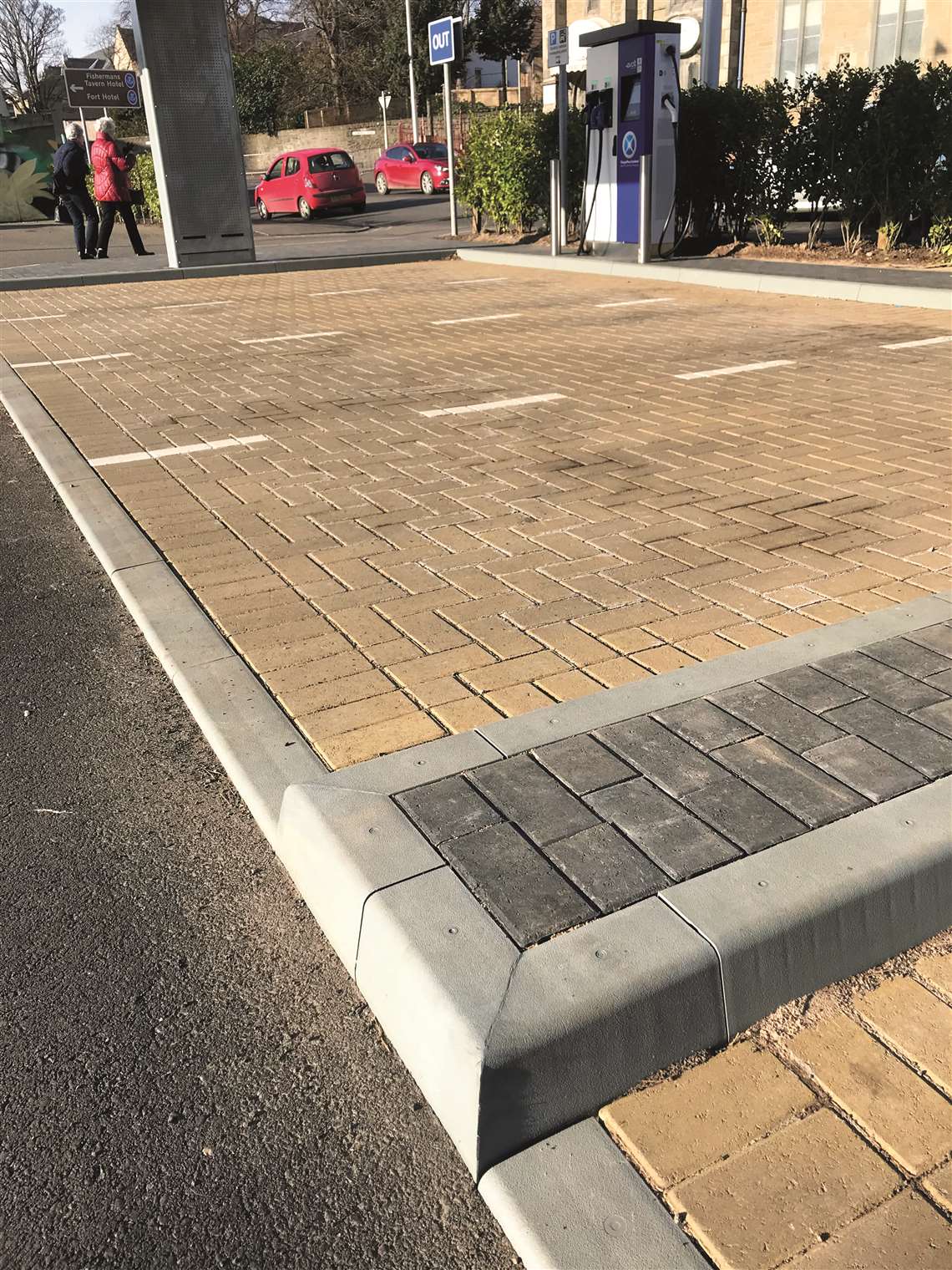 Authorities in the UK have given approval for the use of plastic kerbing - such as that produced by Dura - as ‘standard’ in major road projects
Authorities in the UK have given approval for the use of plastic kerbing - such as that produced by Dura - as ‘standard’ in major road projects
This can be a difficult balancing act for contractors, who have to consider the cost of the materials they use, as well as its transportation, along with the quality of the end product.
Mixing plant specialist Marini has moved sustainability to the top of its design agenda in producing the Marini Master Tower. The company says the Master Tower is largely the result of its research into making the production process more straightforward.
In this case, the plant re-burns the gases produced, making the most of the energy generated as part of its operation.
The result, along with a smart software control system, allows for the production of new mixes of bituminous conglomerate, containing high percentages of recycled material, with, in fact, up to 100% coming from milled road pavements.
Energy savings of up to 20% are said to be possible, with the tower using one burner instead of two, while the fume management system allows for a significant reduction in atmospheric emissions, allowing the new system to be utilised in more sensitive environmental conditions.
Plastic fantastic
In the UK, sustainable construction is high on the agenda, and authorities have recently given the green light to the use of polymeric kerbs in major road construction and maintenance projects.
Dura Products uses 88% recycled polymer in its Durakerb (put simply, an environmentally friendly plastic kerb) and has reported significant growth in demand for its product, which it expects to increase now that legislative barriers have been removed.
Steve Bennett, managing director at Dura Products, says, “For the construction industry to have a sustainable future, innovative green products must be officially recognised to assure contractors of their quality and trustworthiness.
“This has been an incredibly important and time-intensive journey for us, as highlighted by Durakerb’s first accreditation success back in 2008 by BBA/HAPAS. But after 17 years, we are incredibly proud that our kerb units are now accepted as standard for use on major highways. It is a true example of the construction industry adopting change and preparing the ground for future innovation.”
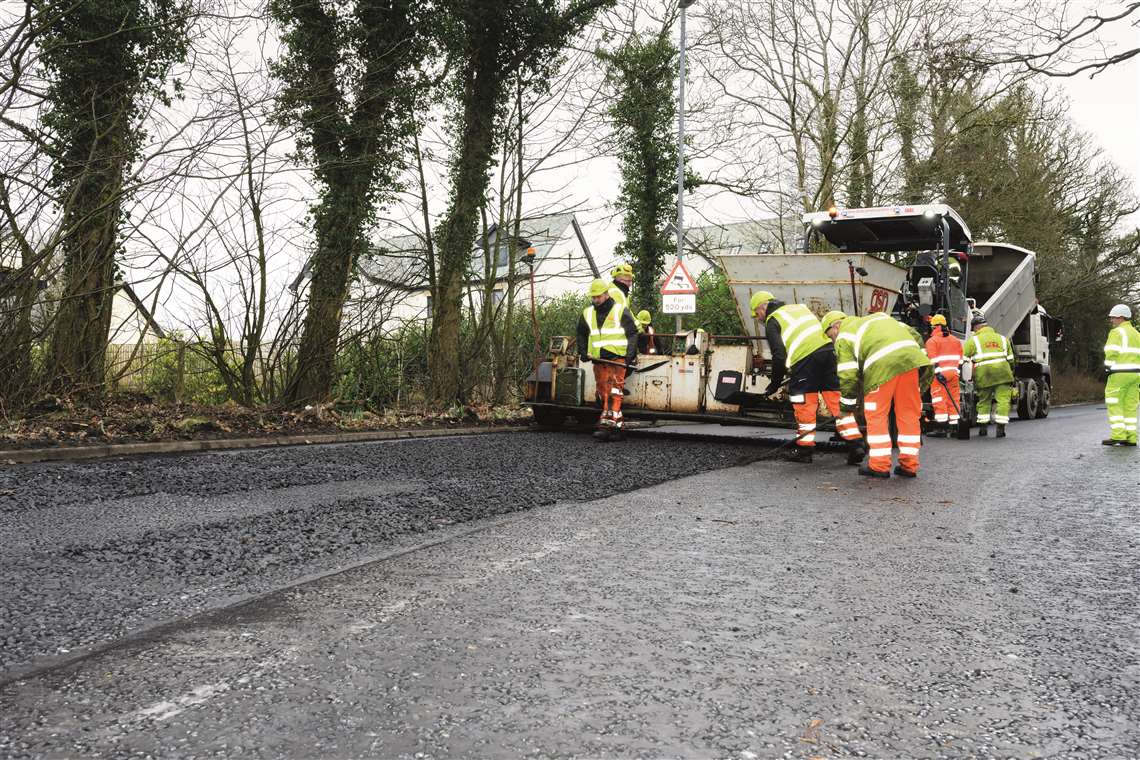 Using MacRebur technology, the equivalent of more than 185,000 single-use plastic bags was used in the resurfacing of this stretch of UK road
Using MacRebur technology, the equivalent of more than 185,000 single-use plastic bags was used in the resurfacing of this stretch of UK road
Sustainability in the bag
Another UK-based company with an increasingly high profile in sustainable construction is MacRebur, which similarly utilises plastics for road construction. This time, however, it is the roads themselves that are made from recycled polymers.
Recently, the company announced that, in Cumbria, a highway had been resurfaced using waste plastic equivalent to more than 158,000 plastic bags, as part of a €26.3 million initiative, funded by the UK’s Department for Transport.
Replacing part of the bitumen normally used to produce asphalt with granulated waste plastic, MacRebur’s roads require less fossil fuel, resulting in a reduction in carbon emissions. The recent resurfacing project in Cumbria offset 2,093kg of carbon.
Furthermore, the company says enhancing and extending the bitumen binder improves the quality of the road itself, making it a win-win for developer and contractor.
Toby McCartney, CEO of MacRebur, says: “Because our roads contain plastic, they are naturally more flexible, meaning they can cope better with contraction and expansion caused by changing weather conditions. Having gone through rigorous testing, it has been demonstrated by various laboratories across the world that our roads significantly improve the stiffness and deformation of asphalt.
Wirtgen pair are Czech mates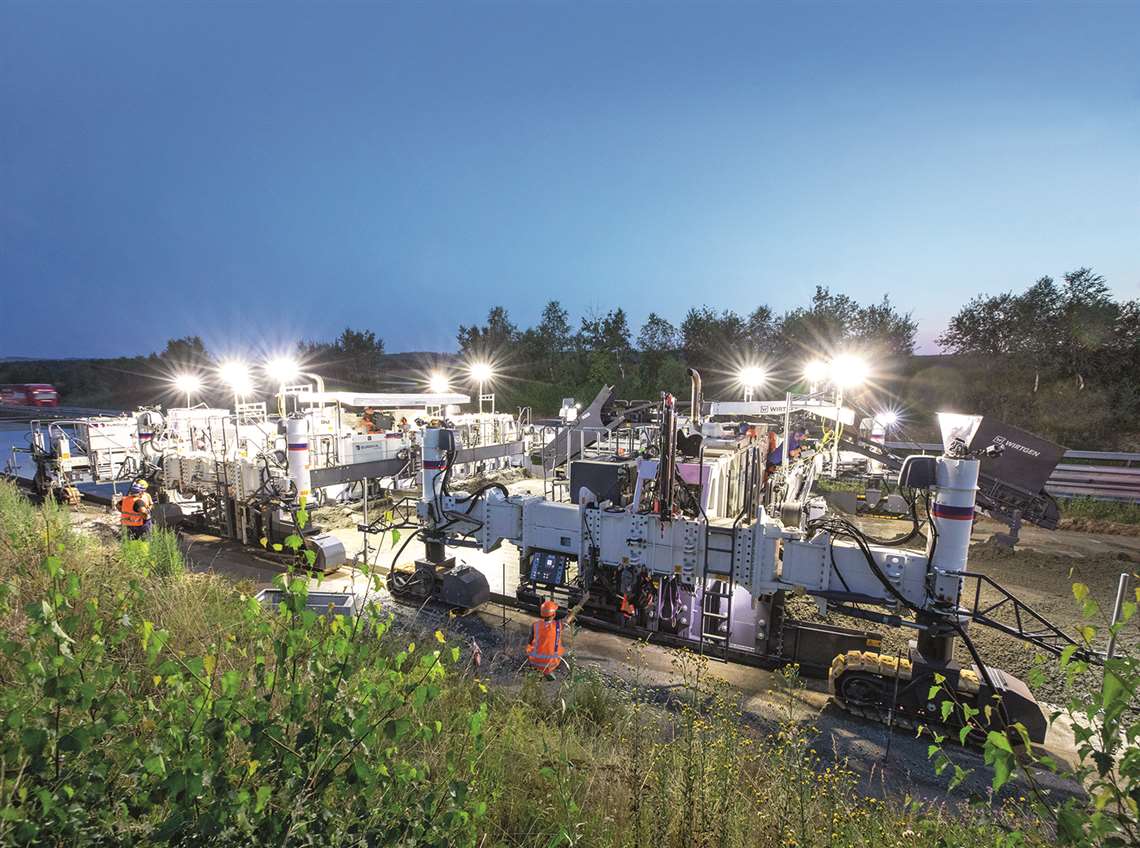
A pair of slipform pavers from Wirtgen – along with a texture curing machine – successfully paved an important 67km stretch of the D1 freeway between Prague and Brno on the Czech Republic. Due to the heavy traffic flow on the road, time was of the essence and the pavers laid more than 60,000 tons of concrete over a period of 20 days – equivalent to 333 tons per hour. The contractor Eurovia CS used the new paving train from Wirtgen to pave the road surfaces with exposed aggregate concrete. The two SP 154(i) slipform pavers created both the bottom and top layers of the road, along with a TCM 180(i) texture curing machine. In addition to their steerable and slewing crawler units, which make the pavers easy to load, using ECO mode significantly reduces their fuel consumption and CO2 emissions, with only average power requirements. Wirtgen says the two-layer paving method is particularly cost-effective because only the top layer consists of relatively expensive exposed aggregate concrete, with a less expensive mix used for the road bed. In the case of the D1 freeway, paving the top concrete layer ‘wet on wet’ produced a solid bond between the layers on the 11.5 m wide and 27 cm high road surfaces. Wirtgen says the 22cm-thick bottom layer of concrete and the 5cm-thick top layer produce a road surface with an extremely high bearing capacity that is also capable of withstanding the constantly increasing axle weights of trucks transporting heavy loads. |
Cat at work on sustainability
Jonathan Davies, industry manager of paving at Finning UK and Ireland, exclusive distributor of Cat products, says better-equipped machines can help maximise productivity, while maintaining safe and sustainable operations. He says, “It is optimistic to say that encouraging cycling and walking in cities will counteract the environmental impact of the paving sector. Companies must equip themselves with sustainable machinery to carry out clean operations. The latest asphalt pavers have an advanced eco-mode setting that modifies engine speed based on load conditions. This cuts fuel burn by five per cent and maximises the performance of the machine. “The environmental impact of the paving sector,” Davies says, “is one area that represents a significant opportunity for improvement. In fact, it is estimated that one standard asphalt paver produces 170.3 kilograms of CO2 per full tank of diesel. To tackle this head-on, electric Cat vehicles — notably tractors in the agricultural sector — are being trialled to see whether performance can match the ecological benefits. To this end, the paving industry may soon be benefiting from electric vehicle operations, rather than diesel-fuelled engines. “A big consideration for the paving sector is finding adaptable, low-intervention solutions that will be completed quickly to avoid unnecessary disruption to the public. Ultimately this is achieved by having a good product support infrastructure from suppliers – one that will extend the life of their machinery and reduce resource input. Used pavers, planers and compactors” he added, “are serviced and maintained so that the benefits of the ecological Caterpillar technology can be experienced by the next user.” |
The Perfect Fit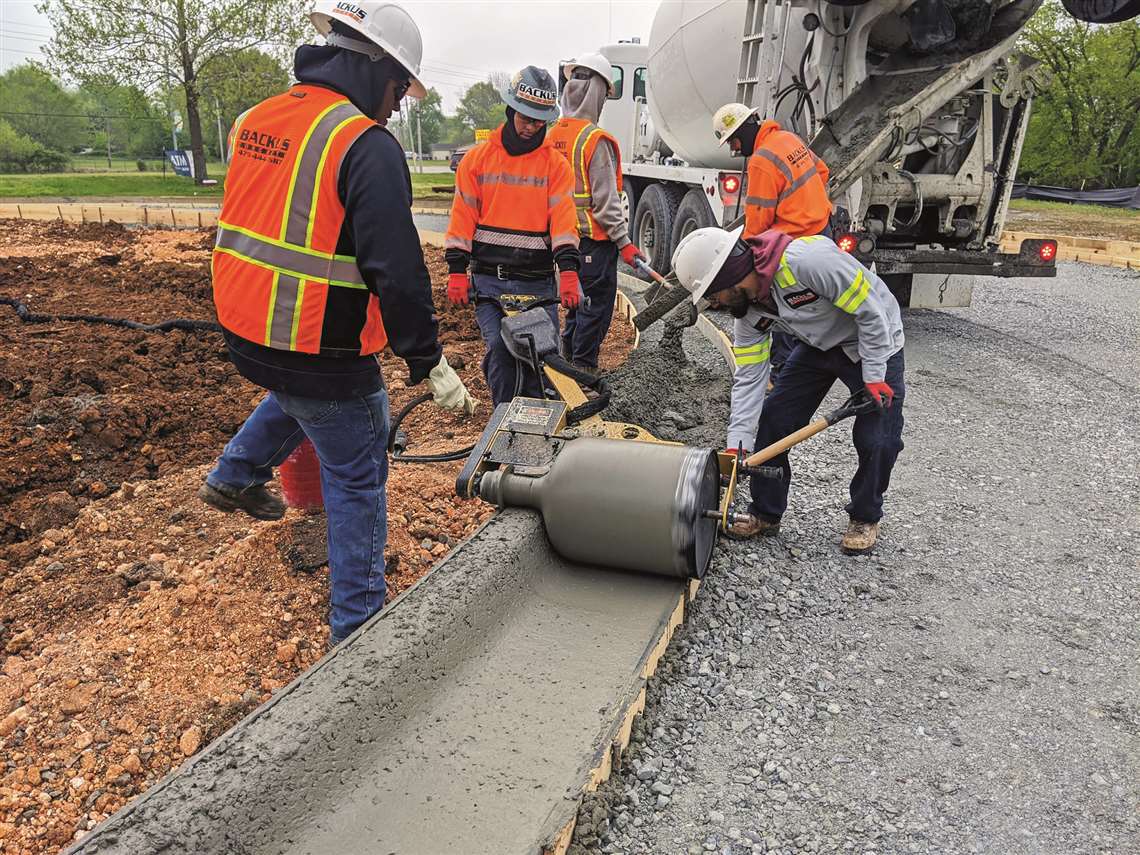
Seth Ulmer, sales manager with Curb Roller Manufacturing, says using a walk-behind curbing machine has the potential to improve efficiency. He says, “Walk-behind curbing machines provide productivity without the extreme physical labor or need for large machinery. This class of equipment provides enhanced productivity in a product that is easy to learn and simple to use, as well as being an economical option. “Unlike the larger drivable machines, walk-behind curb rollers offer ease of transport and a small footprint. The system consists of a handle, attached to a metal drum run by a hydraulic power source. The single-operator machine takes most of the back-breaking work out of curb and gutter, while producing a consistent, high-quality finished product. The equipment is intuitive to use, making it accessible for workers who might not have as much experience. “With low initial investment and minimal maintenance, a walk-behind curbing machine offers a fast ROI and a quick way to boost profits. Whether a contractor is looking to take on new jobs or improve the efficiency of current offerings, the equipment can be a smart addition to a fleet.” |
Pothole solution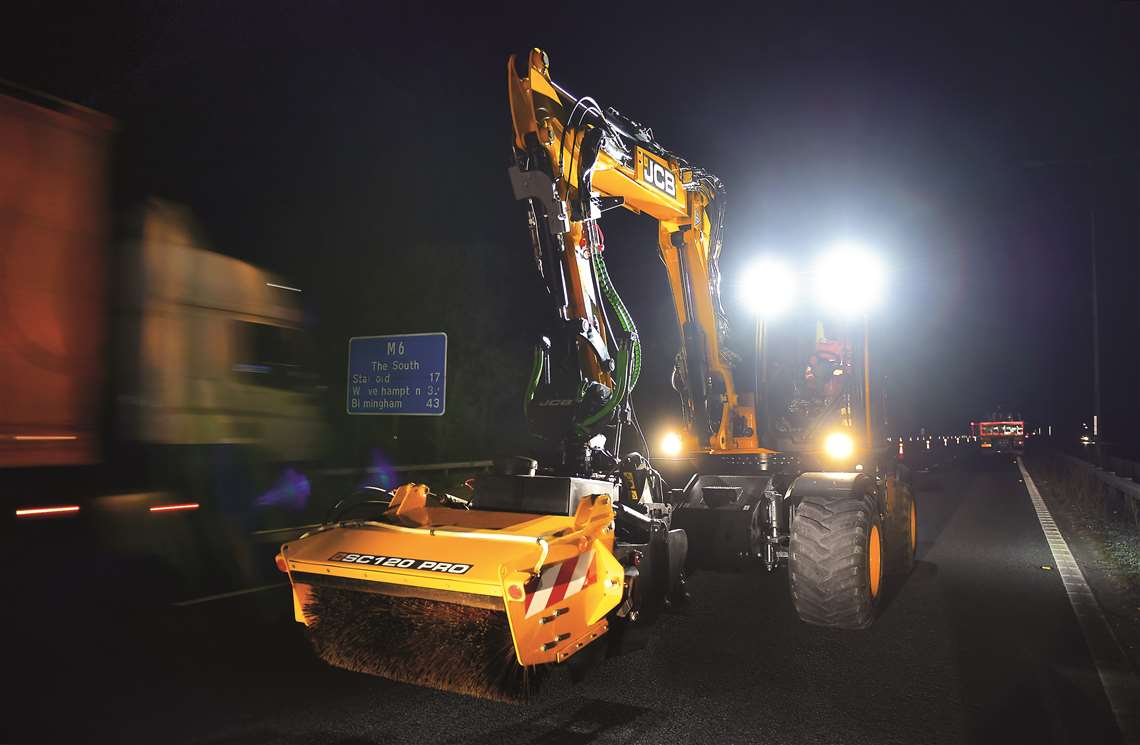
UK manufacturer JCB has developed an excavator-based single-machine road repair solution to permanently fix potholes, without the need for labour-intensive methods or additional machinery. The company says the PotholePro can repair a pothole in less than eight minutes – said to be four times quicker than standard methods. It adds that, using the machine, a pothole can be repaired at half the cost of current solutions. The new machine has a 40km/h travel speed, so can rapidly relocate between sites without additional transport costs. The PotholePro is equipped with a modified Simex planer, with integrated dust suppression, mounted on the machine’s rear skid steer hitch. The planer is 600mm wide, with up to 1.3m of side-shift adjustment. This allows the operator to plane a full carriageway from the kerb, without repositioning the machine. Hydraulic tilt and depth control provide a consistent depth for larger patches. The machine’s TAB two-piece boom is fitted with the JCB ‘multi-tool’ – a hydraulic cropper and a sweeper/bucket mounted – mounted on an X12 Steelwrist tilt-rotator. The 600mm cropping tool provides a squared-off, clean-cut to the repair area, before the operator rotates the boom head to bring the 1.2m wide sweeper/bucket into use, to clean up the pothole area, eliminating the requirement for a separate sweeper truck. Material lifted by the sweeper/bucket can be loaded directly into a support truck for rapid removal from site. |
STAY CONNECTED



Receive the information you need when you need it through our world-leading magazines, newsletters and daily briefings.
CONNECT WITH THE TEAM








